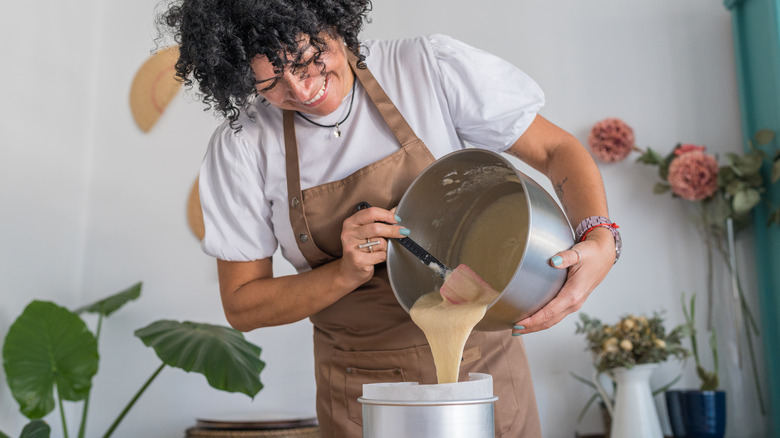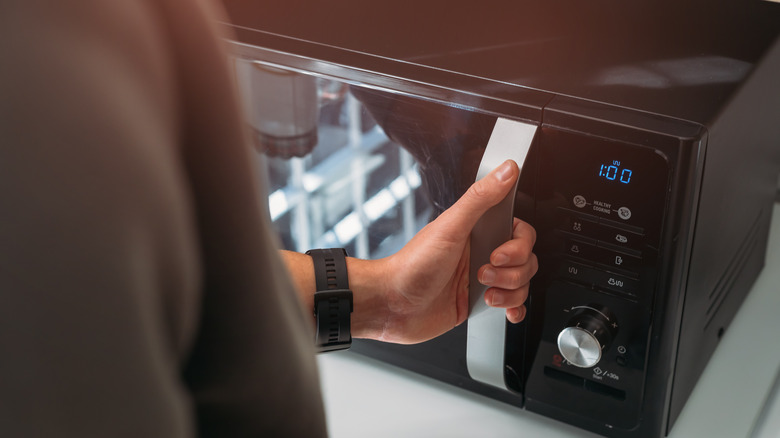The Best Way To Check The Quality Of Cake Batter Is Already In Your Kitchen
While there are plenty of mistakes everyone makes when baking a cake, you can avoid a surprising number of them with one simple kitchen appliance: the microwave. Edmund McCormick, founder and CEO of Cape Crystal Brands, said that a quick dip in the microwave is an easy way to give a general idea of how your batter will turn out without waiting for it to finish in the oven.
"That on-the-fly microwave test is akin to playing a fast-forward of that chemistry," explained McCormick. "It tells you how starches will gel, how proteins are setting[,] and whether sugar balance is spot on — in less than a minute." While it won't save you from the dreaded domed cake caused by too small pans, it does tell you exactly how your batter reacts to heat. This quick diagnosis can be a godsend for bakers without the time to make a recovery cake from scratch, signaling exactly what's wrong with your batter and how to fix it.
"One spoonful in the microwave and it's a rapid sneak peek," McCormick continued. "If it is flat, sweeten it; if dry, moisten it; contracted in texture, [lighten it]." Zap a tablespoon of batter for 30 seconds (or fewer if you have a powerful microwave). If the batter sets up properly, take a sneak peek taste test to see if it needs any additional ingredients — a little espresso in a chocolate batter to make it taste more chocolatey, or some extra lemon zest to make a lemon sponge pop. Just keep in mind that the flavors evolve as it spends time in the oven and that this trick isn't suited for all cakes.
Drawbacks of the microwave trick
For inexperienced bakers, Edmund McCormick's microwave trick is great at giving you a general idea of how your cake batter responds to heat — emphasis on "general." This is not a perfect representation since the heat from microwaves and ovens are quite different, and you won't need to worry about the center of your cake setting properly without burning its exterior.
McCormick explained that this trick is best for butter or sponge cakes but less ideal for chiffons or cheesecakes. Chiffon relies on whipped egg whites to achieve its famously fluffy texture, so you can't just add more sugar to help it rise. Cheesecakes often require low temperatures or a steam bath to protect their delicate dairy ingredients from an oven's radiant heat. Martha Stewart even swears by slow cookers for making cheesecake, so it's difficult to quickly mimic these conditions with a microwave.
Sponge and butter cakes, McCormick noted, are simple, straightforward classics with centuries of experience cooking in simple ovens with no advanced technology or experimentation required. While a microwave may not provide the long heat exposure required to fully leaven batter or bring out the full flavor of different ingredients, they're similar enough to the basic cooking conditions these cakes love and offer a great sneak peek at what your cake will end up looking like.


